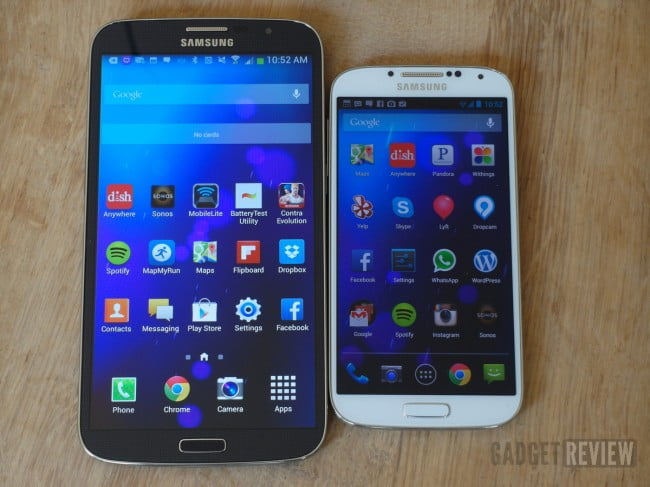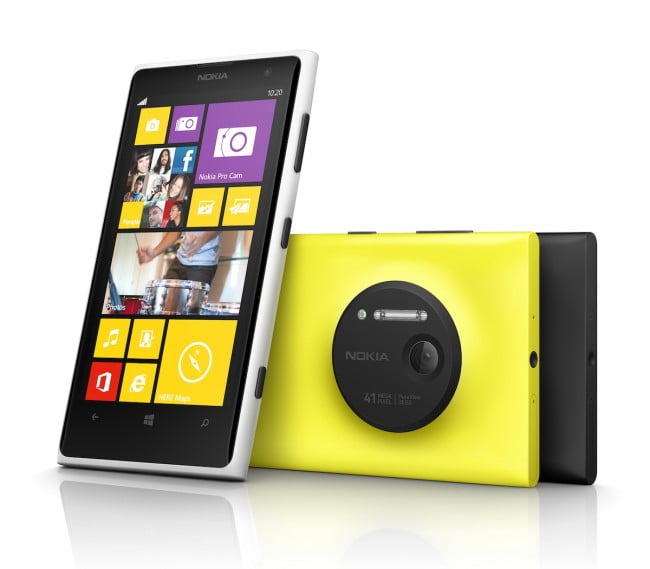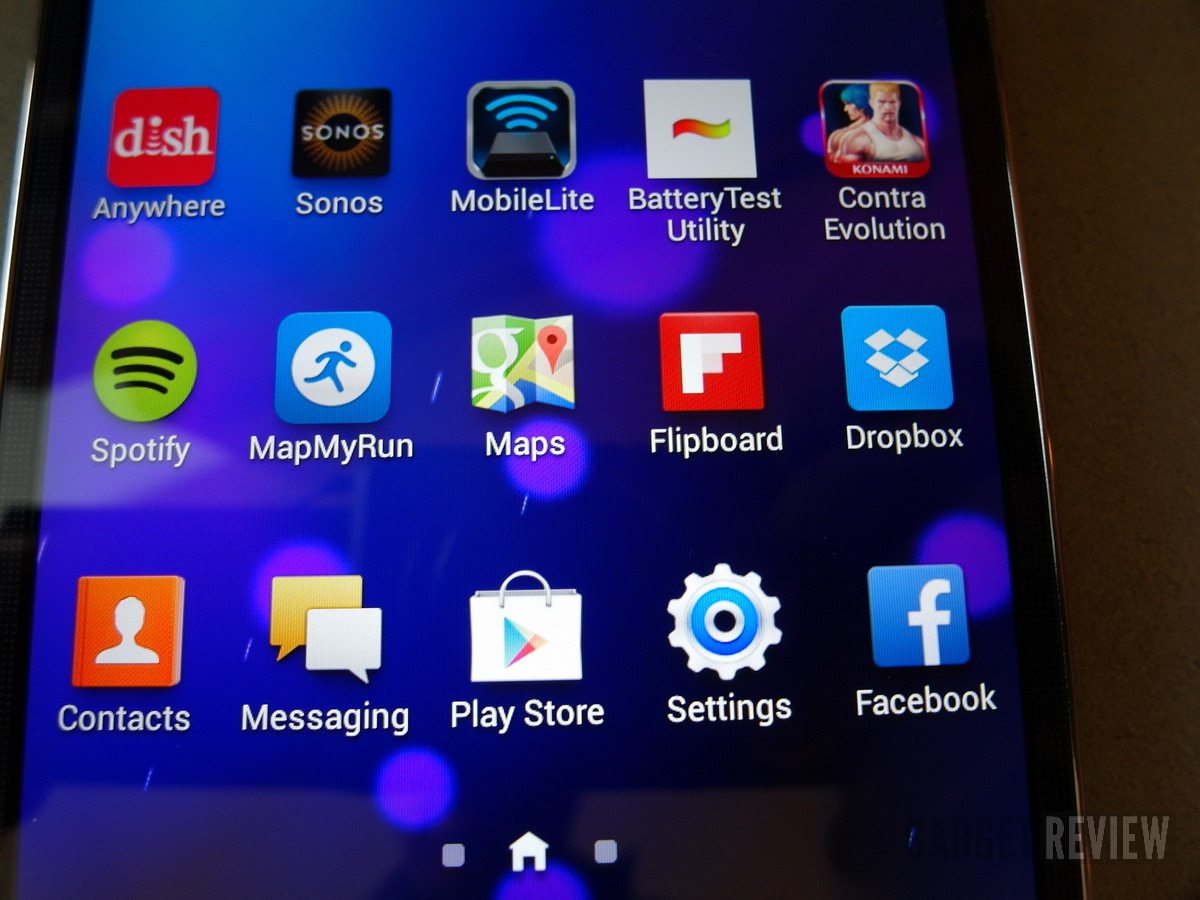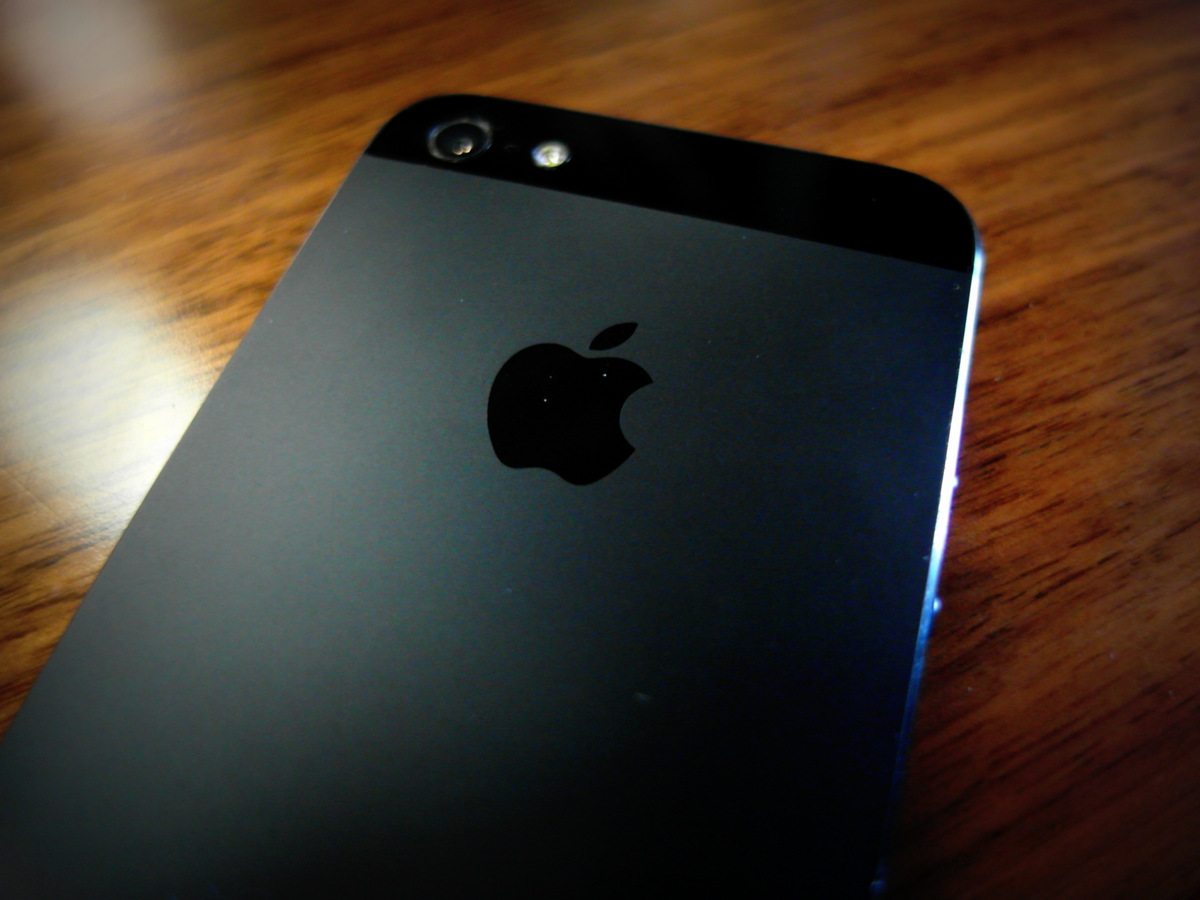Table of Contents_
- 1. Screen Size – What is the Right Size for You?
- 2. Screen Resolution and Quality – How Vivid is the Display?
- 3. Camera – Can it Replace Your Point and Shoot?
- 4. Software Features – How Useful Are They?
- 5. Battery Life – How Long Can it Last?
- 6. Memory (RAM) And Processing Power – How Much Power is Enough for a Good Performance?
- 7. Storage – Do You Really Need a Lot of it?
- 8. Design and Build Quality – Does it Really Matter?
- 9. Availability – Can You Use this Phone With Any Carrier?
- 10. Accessories – Does it Come with Useful Gadgets?
With a plethora of best smartphone choices flooding the market each month, “the next big thing” always seems to be here. Captivated by remarkable features, cutting-edge designs and gargantuan specs, consumers have a lot to choose from – too much to choose from, in fact. Yes, all of this choice can make it hard to choose the phone that is right for you. In this feature guide, you will learn the features to look for when buying a smartphone. That way, you don’t have to be tantalized by a mediocre phone with a two-year contract. You can also read our best Verizon Smartphone article.
Fun Fact: Those features below are based on in-depth analysis and research and personal accounts from consumers
1. Screen Size – What is the Right Size for You?
In the old days of flip phones, having a big phone was not necessary – period. What is more, people mostly used their phones for talking and texting. Those cheesy 2D graphics were not pleasant to look at either. As a result, a larger screen seemed more burdensome than useful. But, things began to change as smartphones entered the scene. People literally marveled when the first waves of 4.0 and 4.3 inch were introduced in late 2009 and early 2010. From then on, it became clear that a whimsy 3.5 inch screen or less just doesn’t cut it anymore. What is the right size? The ideal screen size ranges from 4.0 to 5.0 inches, because handsets in this range maximizes versatility and functionality. For example, smartphones in this category are more comfortable to hold in one hand and they easily fit into your pocket.
4.0 to 5.0 Inches – Why Practical?
- Comfortable to hold
- Easily fits into your pocket
- Relatively light weight
- Not too big and not too small
Big Phones (Phablets) – Are They Right For You?
Seeing the dismal failure of the first 5.0 inch smartphone (Dell Streak), smartphone manufacturers shied away from designing larger phones. As a result, smartphone screen size generally maxed at 4.3 inches from 2010 to early 2011. Bold and aggressive, Samsung went against the odds and introduced the Galaxy Note in late 2011. As expected, it was reviled by many tech reviewers. Some went as far as to call it “useless.”
Hot Tip: Phablets are ideal if you have poor vision, read ebooks, watch movies and browse the web regularly.
After selling more 10 million units by the third quarter of 2012, it was clear that phablets captivated many customers. Why were some customers attracted by those seemingly cumbersome gigantic phones? Surprisingly, it is because of the same thing as average-sized smartphones – convenience. Phablets make it easier to see the content in the screen, especially webpages. As a result, you won’t have to zoom in and out repeatedly to view a webpage or read a document. Granted, phablets are not as comfortable as their smaller cousins.
Benefits of Phablets
- Larger screen enables you to see much more
- Ideal for the elderly and those with vision problems
- Suitable for watching movies and videos
- Good for reading ebooks
- Improved multitasking
Disadvantages
- Less comfort
- Difficult to use with one hand
- Cannot fit in small pockets
2. Screen Resolution and Quality – How Vivid is the Display?
From the iPhone’s retina display to HTC’s Super LCD screens, it is obvious that manufacturers put a lot of emphasis on the display of their smartphones—and for good reasons. The display is the first thing you see when you turn on the screen. As a result, manufacturers are not only concerned with the size of the screen, but with the quality of it as well. Two key factors that determine display quality are resolution and display technology.
Hot Tip: Buy devices with at least a 720p display and a pixel density of 300 ppi.
Screen resolution is basically the amount of pixels in the screen. If you move very close to a TV or a computer monitor, you would notice miniature individual squares, so to speak. Those “squares” are individual pixels. The more pixels a screen has, the clearer the display will be. If the screen has enough pixels, the human eye cannot see them—which is where the term “retina display” comes from. Therefore, a high resolution display enables you to see more on the screen with much more clarity and detail. When buying a phone, make sure the display has a resolution of 1280 by 720 or higher.
As for display technology, it is not major feature to worry about. The key differences are between LCD and AMOLED screens. LCD screens have a slight advantage over AMOLED screens due to accuracy and brightness. Newer forms of LCD displays such as IPS and S-LCD provide even greater color accuracy with excellent viewing angles. AMOLED displays provide saturated colors that make more vivid. Though they provide good color saturation, the colors are not always accurate in AMOLED displays. There always seems to be blueish tint or a yellow wish hue in the screen.
3. Camera – Can it Replace Your Point and Shoot?
Some of the most cherished and embarrassing moments are engraved in photos – it’s all about the type of you camera use. As more people ditch their point-shoot cameras in favor of smartphones to take photos, choosing the right camera phone is becoming increasingly important. However, with all of the smartphones laden with mega pixels, it is very hard to choose the right camera phone.
As a result, you cannot determine the quality of a smartphone’s camera by just looking at its spec sheet. Do not bother asking salespersons because they will likely tell you the phone’s camera is exceptionally good, though they have never tried it themselves. An effective way to find out the quality of a phone’s camera is by looking at test photos and videos.
How to Know if a Phone Has a Good Camera – A Quick Guide
- Determine the phone you want. It is best to choose newer phones, because they tend to have better cameras than older models.
- Look at online reviews of the phone’s camera. What do the reviewers say about the camera? Are its pictures over-exposed, washed out, over-saturated, blurry and out of focus? Or are the photos clear and accurate? It is also important to check about their comments on how the camera performs outdoors and poor lighting conditions.
- View sample photos taken with the phone’s camera. Reviewers usually upload photo samples taken with the camera. View those photos to have an idea of the kinds of picture the phone takes. However, be mindful that many reviewers reduce the quality of the photos to facilitate the uploading process. Therefore, unless it is a raw and unedited photo, keep in mind that the sample photos may look different (usually worse) from the ones the phone actually takes.
- Watch sample videos. Some smartphones are able to take great photos, but subpar videos. Thus, it is crucial to watch sample videos that were taken with the camera. Observe the quality of the video and audio while watching the samples. Does the video look blurry and over exposed? Is the audio distorted, high-pitched and choppy? Look closely for those signs. To find sample videos, go to a video sharing site (i.e. YouTube), type the name of the smartphone and the word “video test” or “video sample” behind it (i.e. “Galaxy S4 Video Test”).
4. Software Features – How Useful Are They?
It’s true. People are lured by products with amazing features. Realizing this, Samsung crammed its Galaxy smartphones with all of sorts of enchanting features. Consequently, masses of people flocked to get their hands on the Galaxy S4 – causing Samsung to sell 20 million units in just the first two months. Of course, manufacturers often pretentiously adorn their phone’s features in advertisements. But, are those features really that useful or innovative? Will they truly be of any use to you? Regardless of how eye-catching the feature is, any interest on it abruptly dwindles when users find out that they don’t suit their needs.
How to Choose a Smartphone with the Right Features – A Quick Guide
- Choose a phone. Of course, the newest phones generally have the latest and most productive features.
- Find out the features it has. You can do this by using Google, Bing and other search engines (sample keyword: “Top Galaxy S4 Features”)
- Check out video demonstrations of the features to see if they are really as useful as advertised. While the Galaxy S4 had many features, things such as Smart Pause and Smart Scroll were gimmicky and annoying to some users.
- Assess your needs. While watching how the features work, contemplate about how they can benefit you and make you more productive. If they don’t suit your needs, there are no real incentives to buy a phone that has them.
5. Battery Life – How Long Can it Last?
You can have the fastest automobile in the world. If it’s out of gas, it can’t go anywhere—period! Likewise, poor battery truly defeats the purpose of having a flagship smartphone. Ideally, a phone should be able to last you a day of moderate use. When buying a smartphone, make sure it has at least a 2000 mAh battery and 15 hours of talk time. Smartphones with such specs should last close or more than a full day of use.
6. Memory (RAM) And Processing Power – How Much Power is Enough for a Good Performance?
Vroom-vrooom-vroooom! Your heart no doubt jolts with awe when you hear the stunning sound of a powerful engine throttling. Similarly, smartphone enthusiasts are mesmerized by the remarkable array of phones with good processing power and memory. Each year, manufacturers stuff more and more memory and processing cores into their phones. Is it really necessary to have all of that power?—No, it is not. In fact, compared to most android flagship phones, Apple’s latest phones have relatively midrange specs. Yes, a lot of RAM and processing power is not an absolute must for good performance.
Hot Tip: If you are on a budget and want a phone that doesn’t lag, buy a midrange phone. Buy a high-end device if you are a power-user.
Midrange and High-end Phones – What Are They and What is the Difference Between Them?
Techies throw these terms around like a rag doll. But, they are two distinctive classes of devices. Just like luxury cars are fraught with power and all sorts of goodies, high-end devices have the latest specs and features. In contrast, mid-range devices can be compared to basic domestic cars – they have enough power and features for you to do the essentials – drive to work, visit friends and go to your favorite places. In a similar way, mid-range phones have enough power to not be sluggish and to provide a satisfying (sometimes fascinating) experience. Of course, from reading what’s above, you should have already assumed what a low-end device is.
2013 Flagship Phone Specs:
- 2 – 3 GB RAM
- Quad Core Snapdragon 600 or 800 Processor
- 1920×1080 (1080p) HD Display
- 8+ Megapixel Camera
- Android 4.2.2 Jelly Bean or higher (iOS 7 for Apple devices)
2013 Midrange Phone Specs:
- 1-2 GB RAM
- Dual Core Snap S4 Pro Processor
- 1280×720 (720p) HD Display
- 8+ megapixel camera
- Android 4.0 Ice Cream Sandwich or higher
Key point: Midrange devices generally have the same specs as last year’s premium or flagship smartphones.
Midrange Device – Key Features:
- Good for saving money (retail price is often $200 or less than high-end phones)
- Provides a satisfactory experience (Not sluggish)
- Has enough features and power to do your essential tasks
High-end Device – Key Features:
- Packed with power and features
- Provides outstanding experience
- Ideal for power users
How to Find a Good Midrange Phone – A quick Guide
- Check the specs for the current latest flagship smartphones (i.e. Google Search: “Galaxy S4 Specs”). Those phones usually have the best specs for their time. Doing this allows you know what the current high-end specs are.
- Check the specs of last year’s flagship phones. Within a year, the specs of a flagship smartphone becomes midrange, and the price is often reduced by half or more. For example, the Galaxy S3 is the predecessor of the Galaxy S4. Yet, the retail price for the Galaxy S4 is almost twice the amount of the Galaxy S3 despite the fact that the differences in specs are not mind blowing.
- Find an affordable phone that you like with similar specs. However, midrange devices are not necessarily a year old or used. Companies develop midrange devices alongside their flagships (i.e. Galaxy S4 Mini and iPad Mini). Nevertheless, you will get a good deal if you shop for a brand new (no cracked screens and scuffs) flagship phone that was released last year. Manufacturers tend not to add premium features on devices that were designed to be midrange. By buying a flagship phone from last year, you’ll have many premium features with just slight reduction in specs.
7. Storage – Do You Really Need a Lot of it?
As users neglect MP3 players, point-and-shoot cameras and portable video cameras, storage space is quickly becoming an imperative feature. What is more, the price changes significantly between different levels of storage. For example, the iPhone 5S 16GB version was originally retailed at $649, while the 32 GB version was $749 – a whopping difference of $100. If you are on a budget, the version with the least amount of space is clearly the viable option.
Hot Tip: Buy a phone with expandable storage and use cloud storage services to save space and money.
But, how much space do you actually need? You actually don’t need a lot of it – a minimum of 8 gigabytes should be enough. That answer may sound appalling and silly to some users, since a phone constantly has to store information. However, with the prevalence of cloud storage services such as Google Drive, Microsoft Sky Drive and Drop Box, an average user can live off a meager 8 gigabytes of storage. Since those services offer a lot of storage for free, you can use them save your photos and documents and keep phone storage clutter in check.
What Kinds of Phones Provide the Best Storage Options?
As already mentioned, pricing changes significantly between different storage variants of some phones (i.e. Apple iPhones). However, that usually occurs with the devices that do not offer external storage. Therefore, buying a phone with expandable storage is the best choice. Buying additional storage is relatively cheap. Many phones offer 32 GB or more of expandable storage. That is why a phone with a lot of internal storage is not really a necessity.
8. Design and Build Quality – Does it Really Matter?
From the Samsung Galaxy’s Note III’s idiosyncratic leather back to the HTC One’s aluminum uni-body, it is clear that manufacturers are ostentatiously flaunting their phones’ design to consumers. But, should design really matter to you? Perhaps, just perhaps it should. That may sound blunt and harsh, but a phone’s design is not necessary for many users. Why? To safeguard their highly cherished phones, many users buy elephantine cases for withstanding drops and impacts.
However, buying a big bulky case that covers most of the phone defeats the purpose of buying a phone with a phenomenal design – it really does. For instance, consumers awed at the appearance of HTC’s flagship phones. But, such beauty is completely veiled when it is chastised by a cumbersome case. Don’t even bother designing custom phones like the Moto X if you are going to cover it up with case. The same thing applies to switching the back cover of the phone to get a massive battery. However, if you are the type of phone who endears design, doesn’t drop phones and doesn’t need cases, buying a magnificent phone will provide a good experience.
9. Availability – Can You Use this Phone With Any Carrier?
Bound by a two-year contract, many users are dismayed when they cannot get a phone that is only available to other carriers. Don’t bother relying on flashing and unlocking, because doing such things are illegal. Unfortunately, there is no easy way to escape this problem. But, you can take the right steps to ease it. Cellular communications rely on two main technologies: CDMA (used by Verizon and Sprint) and GSM (used by AT&T and T-Mobile). The biggest difference between them is this: CDMA doesn’t use SIM cards (not to be confused with 4G SIM cards) and GSM uses SIM cards. CDMA stores your information on the phone, while GSM stores it on the SIM card.
Hot Tip: Buy an unlocked phone for more carrier flexibility and for travelling worldwide. If the phone is from Verizon or Sprint, make sure it has support for GSM networks.
Therefore, if a GSM phone is unlocked, you can easily use it in any GSM carrier without having to go through the illegal hassle of unlocking. Furthermore, GSM is used in most countries. As a result, buying an unlocked GSM phones gives you more flexibility. Granted, newer CDMA phones do offer support for GSM, but the data may not work properly because of incompatible frequency signals. For example, you may not have access to 4G LTE. Again, those newer CDMA phones with GSM support will only work on the GSM carriers of other countries if they are unlocked.
10. Accessories – Does it Come with Useful Gadgets?
While not the most impressive features of smartphones, accessories do have their place. For example, the S-Pen for the Galaxy Note series significantly extends functionality. In general, though, most phones come with the basics: USB charger, screen protector (sometimes) and ear phones. The main thing you have to take note of is accessory support. In other words, how many accessories are available for it?
Flagship smartphones typically have much more support. As a result, they have a greater variety of cases, screen covers, stylus pens and other accessories — which is why it is advantageous to buy a premium or flagship phone from last year as a midrange device if you want to save money and land on good accessories. You will find all kinds of covers, cases and design customizations for flagships.
Can You Truly Have the Perfect Smartphone?
With so many features to look for, almost any phone out there will fall short in at least one of them. The key is choosing a phone that has most features that you are interested in. To get a phone that you truly enjoy, you need to do some researching before going on a buying spree.
Related Articles:




3 responses to “Post Title”